1896 Indian Head Penny Coin Value: How Much Is It Worth?
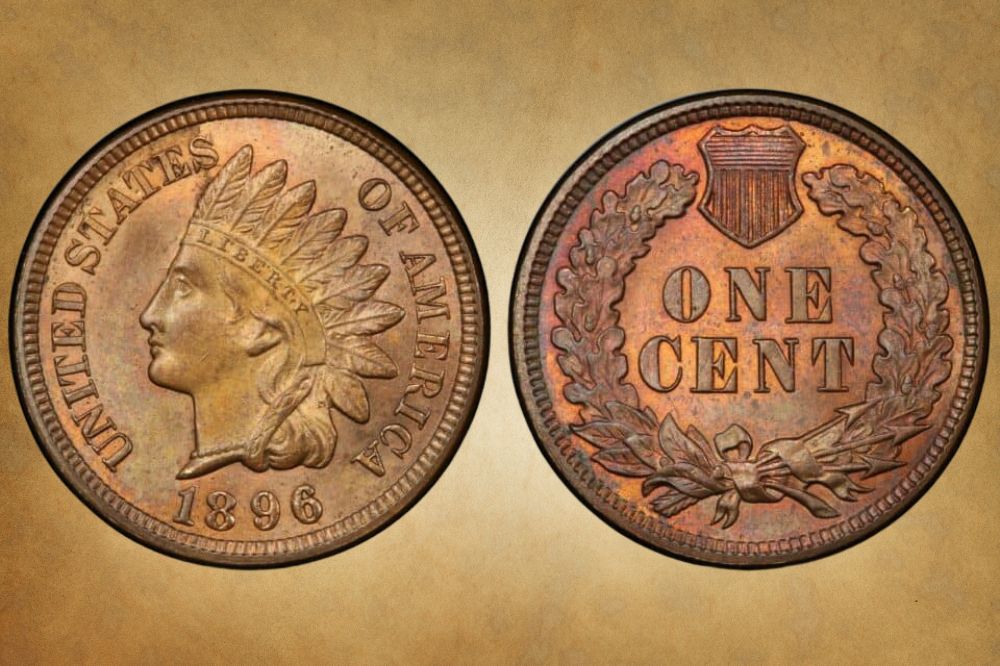
Did you find an 1896 Indian head penny and wonder how much it is worth?
Depending on its condition, whether it is circulated or uncirculated, your Indian penny could be worth hundreds or thousands of dollars!
Indian head cents are a favorite among collectors due to their historical significance and the fact that these coins were generally well-struck. Most are in pretty good shape, even in circulated condition, and the 1896 penny is no exception.
In this article, we take a deep dive into the 1896 Indian head penny value. You’ll learn about the coin’s unique history, features, interesting errors that could be worth a lot, and of course, how much your Indian cent is worth.
Read on to find out more!
1896 Indian Head Penny Value Chart |
||||
| Mint mark | Good | Fine | Extremely fine | Uncirculated |
| 1896 No-mint mark Indian Head Penny Value | $2 | $4 | $15 | $420 |
| 1896 Proof Indian Head Penny Value | – | – | – | $9,300 |
1896 Indian Head Penny Value Guide
In this section, we will find out just how much is an 1896 Indian head penny. These coins were only minted at the Philadelphia mint, which produced two varieties. These are:
- The No-mint mark 1896 Indian Head Penny
- The 1896 Proof Indian Head Penny
Let’s now look at the value of each variety of the Indian head cent from 1896.
The No-mint mark 1896 Indian Head Penny Value
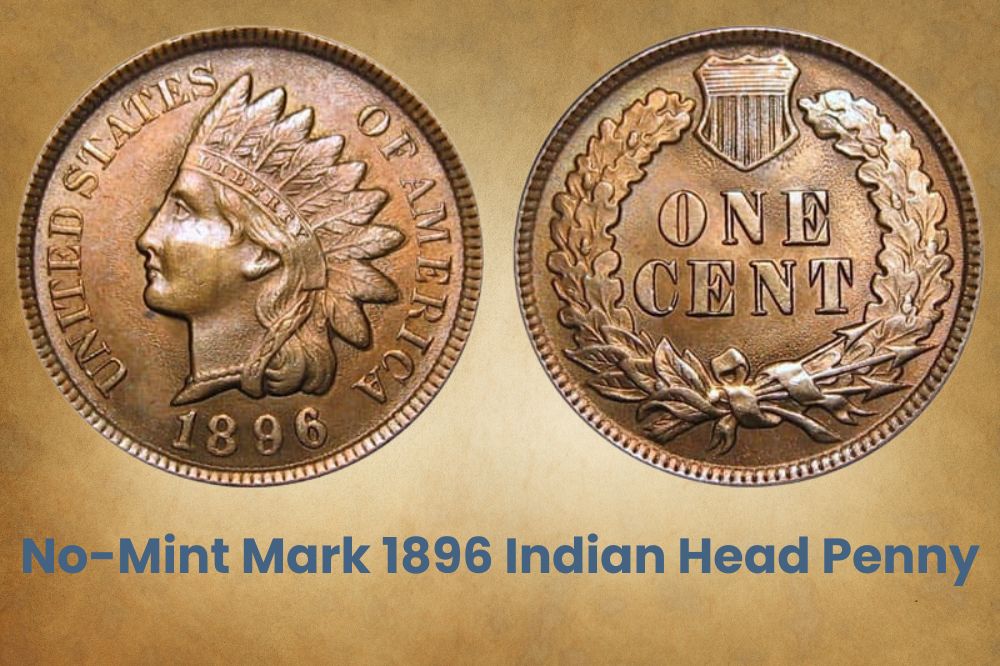
In 1896, the Philadelphia mint produced an estimated 39,055,431 Indian head cents, making this one of the highest mintages in the series.
The coins were generally well-struck, and the high mintage means that collectors can find examples of circulated 1896 Indian heads relatively easily.
Due to the good striking, examples of coins in Mint uncirculated condition up to grade MS65 are plenty. However, coins in grades MS66 and higher are scarce. Coins graded MS67 are rare, with only a handful of confirmed examples.
The 1896 Indian head cent comes in three colors, which impacts the coin’s value. These are:
- Red 1896 Indian head cent
- Brown 1896 Indian head cent
- Red-brown Indian head cent
Red (RD) Indian head cents have a shinier, lustrous appearance and are less blemished. As you might already guess, red coins are the most valuable, with collectors admiring the coin’s bright and blemish-free appearance.
Red-brown Indian head cents feature a combination of red and brownish spots. These coins will typically have a few blemishes here and there, mostly because of the greening caused by oxidized copper metal. The more red the coin spots, the more valuable it is.
Brown Indian head pennies are generally the least valuable. These coins typically have a lot of green spotting and a dull surface and are less physically attractive than their red or red-brown counterparts.
As mentioned, the 1896 no-mintmark Indian head pennies are easily accessible in both circulated and mint states. In circulated condition, these coins are worth between $2 and $35, depending on the condition of each penny.
In uncirculated condition, the 1896 Indian head penny is worth up to $420. The most expensive Red 1896 Indian head penny graded MS67 sold for $45,600 in 2019.
The most expensive Red Brown Indian head penny from 1896 was graded MS66 and sold for $1400 in 2021. Meanwhile, the most expensive Brown 1896 Indian head penny graded MS64 sold for 865 in $2011.
The 1896 Proof Indian Head Penny Value
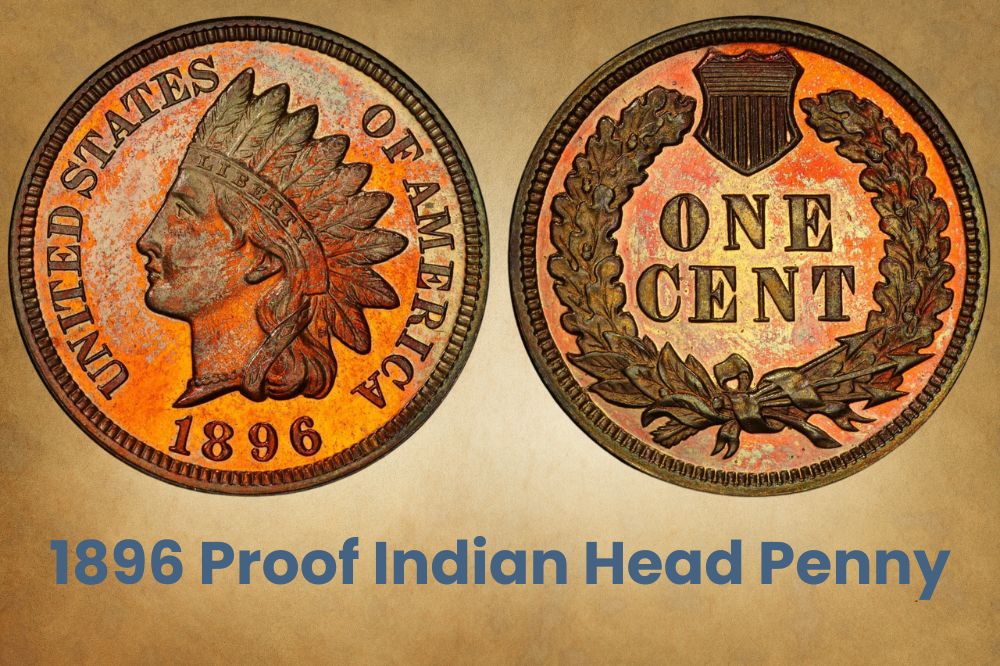
In addition to the regular strike coins, the Philly mint also produced proof coins for collectors. Proofs are of higher quality than regular coins, boasting a lustrous surface, frosted lines, cameo contrast, and superior design.
Interestingly, collectors’ interest in proof coins was at an all-time low in the 1890s. After 1877, 1896 was the first time less than 2,000 proofs were sold, which is ironic given that the proofs the Mint issued between 1896 and 1901 were some of the best quality it had ever made.
The Philly mint produced 1,862 proofs in 1896, with those in cameo contrast less common than full red gems.
Brown proof Indian head pennies from 1896 are worth up to $3,840, while a red-brown one can fetch as much as $1,725.
A Red Gem 1896 Indian head cent is worth as much as $6,000, while one with Cameo Contrast can fetch up to $9,300.
Related Posts: 16 Most Valuable Wheat Penny Errors
1896 Indian Head Penny Errors
Error coins feature unique and interesting features that can increase a coin’s value. Whether a coin’s value changes depends on the type, nature, and extent of the error. For example, small errors you can barely see are not as valuable as large, dramatic errors that impact the coin’s appearance.
There are several mint-related errors seen in 1896 Indian head pennies. It is worth noting that coins from this year were generally well-struck, so error coins are far apart. So, if you are lucky to find an 1896 Indian head penny with a significant error, it might be worth some good money.
Let’s look at some of the known 1896 Indian head penny errors:
1896 Indian Head Penny Repunched Date Error
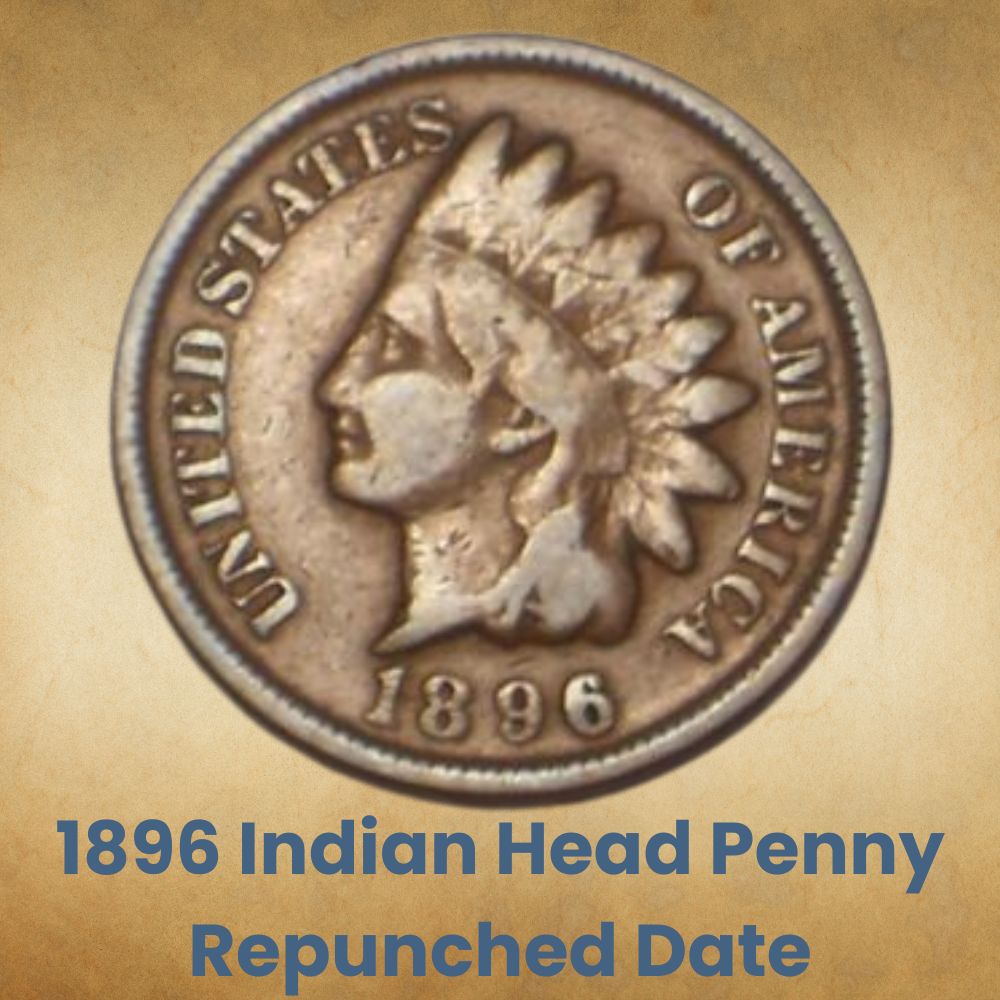
The repunched date error is common among Indian cents. Before 1909, mint workers punched the dates by hand using a hammer and steel punch. Starting in 1909, this hand-based process was replaced by a master hub.
A repunched date error occurs when the date die is punched more than once, causing the date to appear doubled.
The more extreme or visible the repunched date error, the more valuable it is. Check for doubling around the bottom of 1 or 8,9,6 dates on your coin to identify a repunched date error.
1896 Indian Head Penny Cud Error
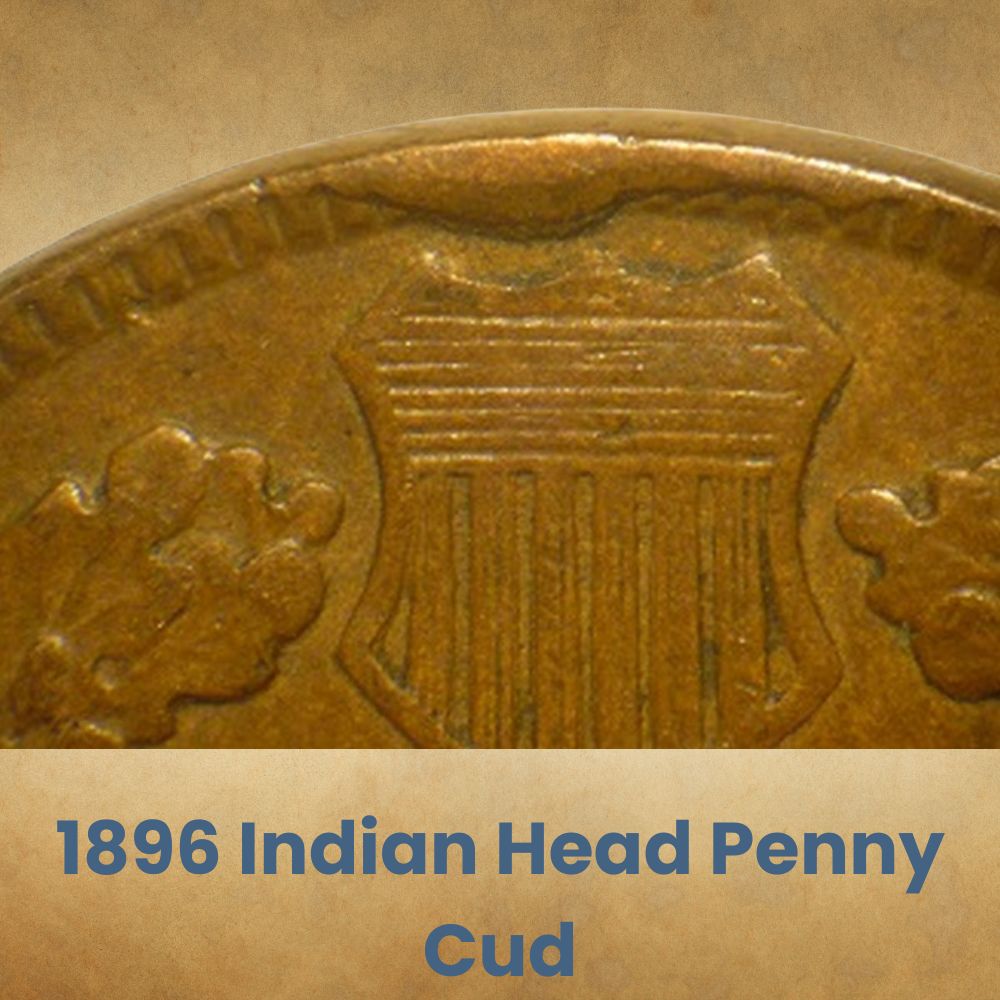
Cud errors appear when part of the die used to punch the design onto a coin breaks. Sometimes, the piece of broken die falls out, resulting in a large, noticeable displacement on the coin. This error is aptly known as a full cud.
Other times, the broken piece does not fall off and instead stays in place. This error is known as a retained cud. Some cuds are so small, you’d need a microscope to see them but these tiny errors are typically not worth much.
A rim cud is visible on an 1896 Indian penny’s obverse. The cud is small but easily visible and extends into the denticles.
1896 Indian Head Penny Misplaced Date Error
Misplaced date errors are also common in the Indian head cents series and have become an interesting way to collect pennies in the series.
This error occurs when one or more number appears where it does not belong. On an 1896 Indian head cent, you will notice a misplaced date error with the digit six where the digit’s imprint appears on the denticles.
Related Posts: 19 Most Valuable Lincoln Memorial Penny Worth Money
History of the 1896 Indian Head Penny
The Indian head penny, also known as the Indian head cent, was minted between 1859 and 1909 at the height of the worldwide copper crisis.
In the early 1850s, copper prices were at an all-time high, and in response, the United States Mint decided to reduce the size of pennies. Large pennies were the norm then, but these were no longer sustainable, given the high production costs. As such, the Mint began producing the smaller Flying Eagle Penny from 1856 to 1858.
The new penny the Mint introduced contained a smaller amount of copper but faced all kinds of design problems. Mint Director James Ross Snowden wrote to the Secretary of the Treasury toward the end of 1858 asking that the coin’s design be changed. Snowden noted that the coin had a high relief and was unpopular with the public.
The Mint instructed Chief Engraver of the United States, James Barton Longacre, to develop a new design to minimize the problems facing the Flying Eagle Penny he had previously designed. Longacre prepared various designs, and Snowden eventually chose the one with Caucasian women wearing a Native American headdress on the obverse and a laurel wreath on the coin’s reverse.
Production of the new Indian head penny began at the start of 1859. The coins comprised 88% copper and 12% nickel between 1859 to 1864. In 1864, the Mint changed the coin’s composition to 95% copper and 5% zinc and tin, which remained unchanged until 1909.
Like in all other years, the 1896 Indian head penny was only minted at the Philadelphia facility. The Mint produced large amounts of these and released them into circulation, where they are still available more than 100 years later.
Related Posts: 19 Most Valuable Wheat Penny Worth Money
How to Identify The 1896 Indian Head Penny?
Let us now look at the physical attributes of the 1896 Indian head penny. Knowing what to look for can help you determine whether you have a rare coin Indian head cent that could be worth a lot of money.
The Obverse of the 1896 Indian Head Penny
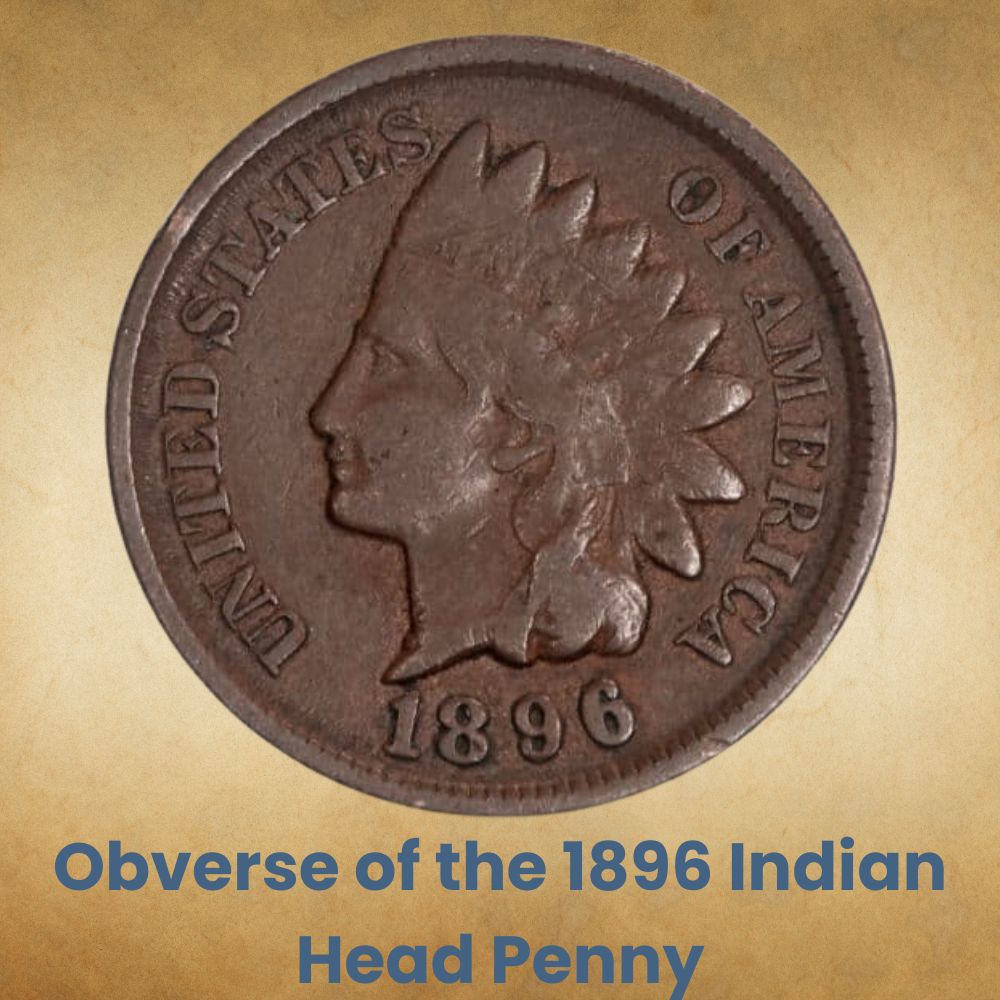
The obverse is a coin’s top-facing side, also known as the head. The obverse of the 1896 Indian head penny features a left-facing Caucasian woman representing Lady Liberty.
Lady Liberty wears a Native American headdress over her flowing hair. She’s also tied a band bearing the word LIBERTY around her forehead and fastened at the smalls of her neck.
The words UNITED STATES appear along the coin’s left edge, and the rest of the words OF AMERICA are inscribed around the right edge.
The date 1896 appears prominently around the coin’s bottom edge.
The Reverse of the 1896 Indian Head Penny
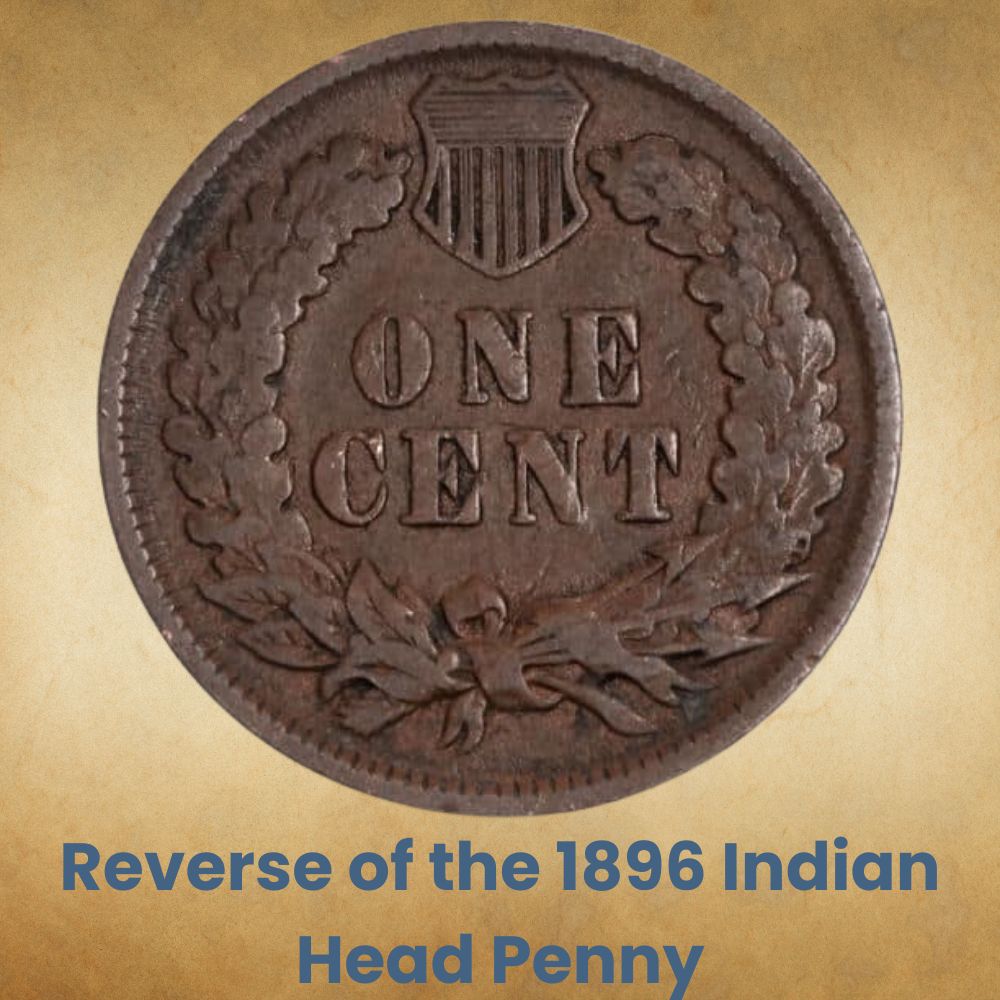
A coin’s reverse is the back side, also known as the tail. On the 1896 Indian head penny, the reverse design depicts a laurel wreath around the coin.
A ribbon neatly ties the two laurel branches together at the bottom. You can notice three arrows protruding from the bow tie. The arrows represent readiness to defend the Union.
At the very top of the coin’s reverse is a small shield, which was added to the Indian cent design in 1860. The shield also alludes to the defence of the Union, which was symbolic during those turbulent post-war years.
The coin’s denomination, ONE CENT, appears prominently at the center between the two laurel branches.
Other Features of the 1896 Indian Head Penny
The Indian head penny of 1896 consists of 95% copper and an alloy of 5 percent zinc and tin.
The coin weighs 3.11 grams and has a diameter of 19mm.
You will not find any mintmark on the 1986 Indian head cent as it was minted in Philadelphia, and the Mint there historically does not assign mintmarks.
What does an 1896 proof penny look like?
Proof coins are typically of a higher quality than regular coins, and the 1896 Indian cent is no exception. When examining an 1896 proof, look for an appealing, lustrous, brown or shiny red, even-toned piece. Dark brown pieces are easy to find, but gem red proofs with cameo contrasts are rare but can still be found. Ideally, bring your coin to a professional coin grader to be sure that you have a real proof in hand.
Is 1896 the rarest Indian head penny year?
Indian head pennies are generally valuable in their own right, regardless of the mint date. Your coin is likely worth more than face value, even in circulated conditions. That said, the rarest and most valuable is the 1877 Indian head cent. There is nothing special about this coin other than only 852,500 pieces were minted that year, the lowest mintage in the series. So the 1877 Indian head penny stands out because few were minted, making these coins extremely difficult to find today.
Is the 1896 Indian head penny bronze?
The 1896 Indian head cent is bronze, consisting of 95% copper and a 5% alloy mix of tin and zinc. Before 1864, the Mint produced copper-nickel coins, but when faced with an acute nickel shortage and rising prices, the Mint changed the composition of pennies to bronze.
